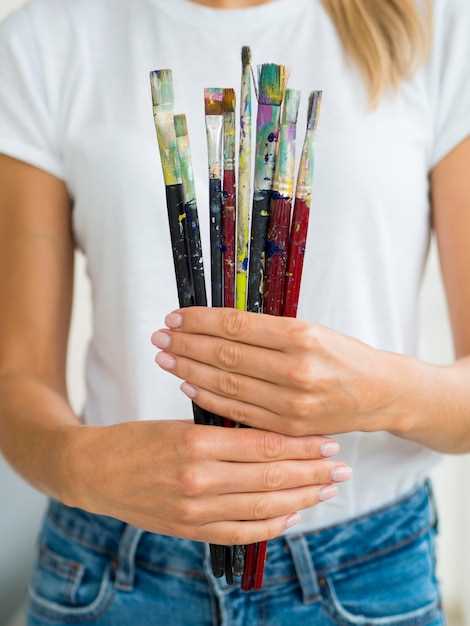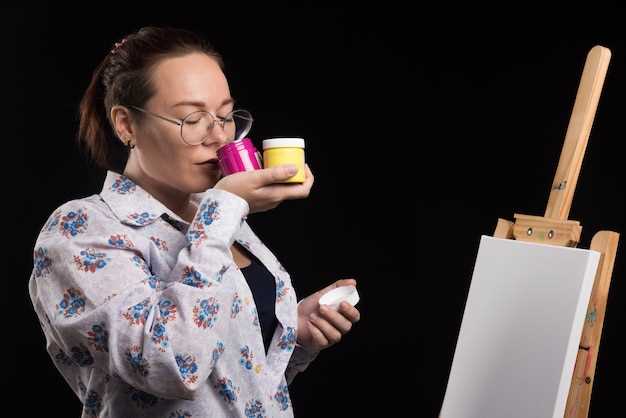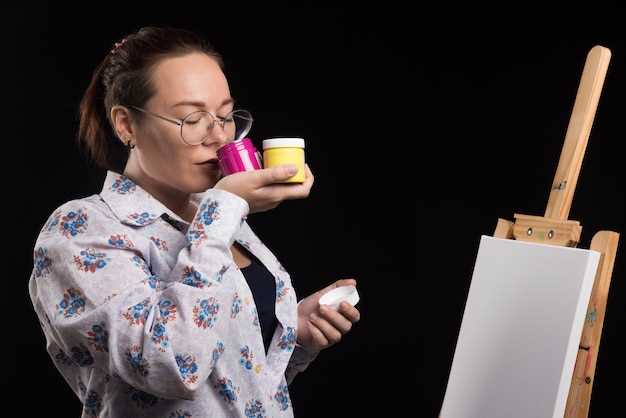Embarking on the journey of showcasing creative pieces brings excitement. The world is filled with opportunities for expression and connection. Yet, turning passion into revenue requires more than just talent. It’s about understanding the landscape, recognizing the audience, and knowing how to engage with them effectively.
Effective strategies can elevate artistic endeavors to new heights. Every piece tells a story, and that narrative deserves to reach the right audience. Artisans often grapple with the challenges of promotion. With the right approach, one can navigate these hurdles with confidence and flair.
Consider market dynamics and trends, as they play a crucial role. Crafting a memorable experience does more than display skills; it fosters a relationship with potential buyers. Building this connection can enhance appreciation and understanding of the craftsmanship involved. When individuals feel involved, they are more inclined to invest in the narrative behind each unique piece.
Utilizing social platforms, participating in local events, and collaborating with other creatives can amplify visibility. Tactics should be diverse and adaptable, catering to different tastes and preferences. Personal branding and storytelling become vital assets in this arena. Embrace each opportunity to engage, showcase, and ultimately share your vision with others.
By immersing oneself in the community and continuously evolving, the potential for success expands. As you navigate this captivating realm, consider embracing innovation and authenticity in every interaction. Each step taken, each connection made, lays the groundwork for a thriving venture in the artistic market.
Mastering the Art of Selling Glass Creations

Creating stunning pieces is just one part of the journey. The magic happens when a connection is formed between the maker and the admirer. Engaging with potential buyers can transform casual interest into passionate appreciation. It’s not merely about transactions; rather, it’s a vibrant exchange of creativity and vision.
Understanding your audience is crucial. Different groups appreciate unique aspects of craftsmanship. Some value innovation, while others are drawn to tradition. Crafting a narrative around each piece can help communicate its significance.
Know where to display your work. Selecting the right venues makes a difference. Local galleries, craft fairs, or online platforms all offer distinct advantages. Most importantly, adapting to each environment allows you to reach diverse audiences effectively.
Building relationships is fundamental. Each interaction may lead to a loyal customer. Attend festivals, workshops, and community events to foster connections. You never know who may become your biggest supporter.
Showcase your pieces with care. Presentation matters immensely, and the environment in which work is exhibited can enhance its appeal. Lighting, context, and accessibility play significant roles in capturing attention. Striking a balance between aesthetics and functionality creates an inviting atmosphere.
Marketing strategies should not be overlooked. Utilize social media platforms to share captivating stories about creations. Engaging content can draw more eyes to your work and encourage interaction. When people feel involved, they’re more likely to invest in pieces that resonate with them.
Effective Strategies for Marketing Glass Art

Promoting unique creations requires creativity and thoughtful approach. Artists should explore diverse channels for reaching potential buyers. It’s essential to connect with audiences in meaningful ways. This can lead to opportunities you might not initially consider.
Social media platforms offer a vibrant space for showcasing work. Engaging visuals and captivating stories can turn casual viewers into loyal fans. Building a brand identity through consistent posting helps cultivate a dedicated community. Utilize platforms suited to your intended audience.
Participating in local craft fairs and art shows enhances visibility. Face-to-face interactions allow for personal connections and feedback. Many collectors appreciate the chance to meet artists directly. This can significantly boost interest and sales.
Consider fostering partnerships with local businesses and galleries. Collaborations can introduce your pieces to new clients who may not be aware of you. Leverage these networks for mutual growth and increased exposure. Engaging in joint exhibitions or events opens further avenues for interaction.
Don’t overlook the power of an enticing online presence. A well-designed website can serve as a portfolio and a sales platform. Incorporate an effective e-commerce system to streamline transactions. An informative blog can also provide insights into your creative process.
Networking with other creators can yield valuable support and inspiration. Participate in online forums or local artist groups to share experiences. This exchange of knowledge often leads to discovering fresh marketing strategies. Every connection can foster growth in unexpected ways.
Building a Strong Online Presence
In today’s digital landscape, establishing a compelling presence online is essential. The internet serves as a vast marketplace, enabling creators to connect with audiences worldwide. With a well-crafted persona, it’s possible to showcase talents and unique creations effectively. This virtual space allows for interaction and engagement that physical galleries might not offer.
Platforms like social media and personal websites act as powerful tools. Use them to amplify visibility and foster relationships with collectors. Regular updates and authentic interactions can captivate a dedicated following.
Consistency is crucial; frequent posts help maintain interest over time. Engaging content, such as behind-the-scenes glimpses or process videos, can enhance connection. As audiences become invested, they are more likely to support endeavors actively.
Incorporating storytelling into your posts adds depth and intrigue, painting a vivid picture of your creative journey and the inspiration behind each piece. This approach not only captivates viewers but also cultivates a sense of community around your work.
Utilizing varied platforms facilitates reaching different demographics. Instagram, Pinterest, and Facebook each cater to unique audiences. By adapting content to fit the style of each platform, the impact can be amplified remarkably.
Ultimately, building a robust online image requires authenticity and passion, allowing potential supporters to connect deeply with both the creations and the creator behind them.
Utilizing Social Media Platforms
Harnessing the power of online networks can transform visibility. Social media offers a dynamic space for connection and engagement. Artists can showcase their unique creations, building a community around their craft. Potential buyers actively seek inspiration, making these platforms ideal for outreach.
Effective strategies are essential for making a lasting impression. Start by selecting platforms that align with your vision. Instagram thrives on visuals, while Facebook fosters community interactions. Pinterest acts as a digital mood board, perfect for aspiration and discovery.
Engagement is key; respond to comments and messages promptly. Share behind-the-scenes glimpses and the creative process. This transparency can forge deeper connections with followers, allowing them to feel part of the journey.
Regular content updates maintain interest and draw newcomers into your world. Don’t shy away from collaborating with fellow creators or influencers, as cross-promotion can amplify reach and introduce your work to diverse audiences. Participate in online challenges or events, enhancing visibility and fostering connections within the community.
Analyzing your efforts with insights tools can refine strategies effectively. Understanding which posts resonate can guide future content. Remember to cultivate authenticity; genuine interactions will resonate more deeply with your audience.
Engaging with Art Communities
Connecting with fellow creators can be incredibly rewarding. It fosters collaboration, learning, and inspiration. Sharing experiences and insights opens doors to new opportunities. Communities often provide a supportive atmosphere. Here, you find encouragement and constructive feedback.
Participating in gatherings and events allows individuals to showcase their work. It’s a chance to network, discuss techniques, and gain visibility. Engaging with various groups unveils diverse perspectives, enriching your artistic journey.
| Ways to Engage | Description |
|---|---|
| Join Online Forums | Connect with artists globally, exchange ideas, and seek advice. |
| Attend Workshops | Enhance skills while meeting like-minded creators in person. |
| Follow Social Media Groups | Share your projects, receive feedback, and stay updated on trends. |
| Volunteer for Local Events | Engagement offers exposure and builds relationships within your community. |
By immersing yourself in these environments, you cultivate a network that empowers creativity and elevates individual pursuits, creating a vibrant tapestry of support and innovation that enriches both personal and communal artistic endeavors.
Participating in Local Art Fairs
Engagement in community art festivals offers unique opportunities to showcase creativity. These events draw crowds, fostering connection between artists and potential buyers. Artists can share their passion and narratives while interacting face-to-face with the audience. Each fair becomes a vibrant celebration of artistic expression, where individual pieces shine brightly.
Preparing for such occasions requires strategic planning.
Choose your best works to display; selection is key to making an impression. Sturdy and visually appealing setups can attract a diverse range of attendees. Create an inviting booth with clear signage that communicates your artistic vision. Social interaction is vital; practice your storytelling to engage visitors meaningfully.
Networking is another merit of participating in these gatherings. Conversations with fellow creators can lead to collaboration or support opportunities. Building relationships within this sphere enriches not just your experience but also enhances your growth as a creator. Embrace the vibrant energy of the event while being open to feedback and insightful dialogues.
Ultimately, the goal of partaking in local fairs extends beyond mere exposure; it’s about weaving connections, sharing inspiration, and leaving a lasting impact on the community that appreciates undeniable craftsmanship.
Creating Unique Glass Pieces to Attract Buyers

Crafting distinct items can significantly drive interest among potential customers. The market thrives on originality and creativity. Unique designs often stand out in a crowded space. They capture attention and spark curiosity. When individuals encounter something different, they’re more likely to remember it.
To achieve a memorable creation, consider the following approaches:
- Experiment with colors and textures.
- Incorporate mixed materials for a fresh perspective.
- Draw inspiration from nature or current trends.
- Engage with local culture and traditions.
Each of these strategies presents opportunities for innovation, allowing you to explore ideas beyond conventional boundaries while envisioning pieces that might resonate deeply with specific audiences.
Moreover, collaboration with other craftsmen can open doors to fresh techniques. Unique glass items don’t just reflect skill; they tell stories. Infusing personal experiences into each piece can forge connections with potential owners. This emotional link often leads to greater appreciation and, ultimately, transactions.
Lastly, storytelling is vital. Share the inspiration and intentions behind every piece. Buyers are drawn to the narratives behind creations. By engaging them with your artistic journey, you create a lasting impression that transcends the mere aesthetics of your work.
Innovative Techniques and Designs
Creativity thrives on the edge of convention. Unique approaches and fresh aesthetics can significantly impact visibility and desirability. Embracing new methodologies not only enhances craftsmanship but also shapes distinct identities. Artists often seek inspiration from diverse sources, exploring realms beyond traditional boundaries.
- Experiment with color layering for depth.
- Incorporate mixed-media elements to enhance texture.
- Utilize unconventional tools to create unexpected patterns.
- Play with transparency and light for striking effects.
Innovative methodologies may transform an ordinary piece into a conversation starter, allowing artists to capture the imagination of prospective buyers. Every decision, from material choice to final finishing touches, contributes to the narrative conveyed through the artwork.
- Consider interactive designs that invite engagement.
- Explore sustainable materials that appeal to eco-conscious collectors.
- Experiment with geometric shapes for modern aesthetics.
By weaving together various influences and pushing creative boundaries, makers can develop eye-catching pieces that resonate with an audience seeking originality. Mutable in nature, artistic expression thrives on such experimentation, ensuring a vibrant and evolving experience.
Choosing High-Quality Materials
Creating exceptional pieces requires attention to the materials utilized. The selection process can significantly impact both the finished work and the overall impression it leaves on viewers. Quality materials not only enhance durability but also elevate the aesthetic appeal. With the right choices, every creation becomes a true reflection of the artist’s vision.
Consider the following factors when selecting materials:
- Source of the materials
- Texture and color
- Durability
- Cost-effectiveness
- Environmental impact
Every element plays a role in shaping the final product, which in turn influences how it is perceived in the marketplace. Authenticity often shines through in quality craftsmanship, demonstrating a commitment to excellence.
It’s essential to seek suppliers known for their reliability and integrity, ensuring that every piece is crafted with the utmost care. Additionally, exploring innovative options can lead to unexpected results that captivate audiences. Engage with materials that inspire creative exploration.
Incorporating unique elements, such as recycled glass, can tell a compelling story. This not only enhances value but also resonates with environmentally conscious buyers. Ultimately, the quality of the materials should align with the artistic goals, creating a cohesive narrative within each piece.
Understanding Current Trends in Art
Staying in tune with what is popular in the creative world is crucial. Artists must recognize shifts in tastes and preferences. Trends can reflect cultural movements, societal issues, or technological advancements. By observing these elements, one can gain insights into the broader art landscape. Information travels fast in today’s digital age, influencing public perceptions and desires.
Recent movements often emphasize sustainability and social justice. Many creators are now committed to eco-friendly materials and practices. Minimalism continues to capture attention, while maximalism is gaining ground as well. Digital art is on the rise, with NFTs pushing boundaries in ownership and distribution. The blending of various media has also become more prevalent, allowing for unique expressions.
| Trend | Description |
|---|---|
| Sustainability | Focus on eco-friendly practices and materials. |
| Minimalism | Simplicity in design, emphasizing essential elements. |
| Maximalism | Rich layers of color and detail, bold statements. |
| Digital Art | Use of digital tools, including NFTs for ownership. |
| Mixed Media | Combination of various artistic techniques and materials. |
Observing these developments allows creators to adapt and thrive. Artists can incorporate trends while staying true to their vision. Authenticity remains key; trends should enhance rather than define one’s work. Engaging with contemporaries and participating in dialogues fosters a deeper understanding of the artistic climate. Ultimately, awareness of current trends can guide thoughtful exploration and innovation in one’s craft.
Video:
Become a WEALTHY Artist in 2024 – TOP PAYING Income Streams
Become a WEALTHY Artist in 2024 – TOP PAYING Income Streams by Kayla Carlile 357,327 views 1 year ago 17 minutes
Q&A:
What are the best platforms to sell glass art online?
There are several great platforms where you can sell your glass art online. Websites like Etsy, eBay, and Amazon Handmade cater specifically to artisans and are user-friendly for setting up an online shop. Additionally, social media platforms like Instagram and Facebook can be extremely effective for showcasing your work and driving sales. You could also consider building your own website using services like Shopify or Squarespace to have full control over your branding and sales process. Each platform has its pros and cons, so it’s important to evaluate them based on your target audience and marketing strategy.
How can I effectively market my glass art to attract more customers?
Marketing your glass art effectively involves a mix of online and offline strategies. Start by establishing a strong online presence through social media engagement, where you can share high-quality images of your artwork and behind-the-scenes processes. Use hashtags related to glass art to reach a broader audience. Additionally, collaborating with influencers or other artists can help you tap into new audiences. Don’t forget about offline marketing; consider participating in local craft fairs, gallery exhibitions, or art shows to showcase your work in person. Networking within the art community can also open doors to new opportunities for promotion.
What pricing strategies should I consider for my glass art?
Pricing your glass art correctly is crucial for attracting buyers while valuing your work appropriately. A good starting point is to calculate the cost of materials and time spent creating each piece. Consider using a multiplier method where you multiply your total costs by a specific factor (often 2-3 times) to establish a retail price. Research similar items to understand market prices; however, be cautious of underpricing just to make a sale, as this can devalue your work. Offering a range of products at various price points can also attract different customers. Test your prices and adjust them based on feedback and sales trends.
How important is storytelling in selling my glass art?
Storytelling plays a significant role in selling art, including glass art. Customers are often drawn to the narrative behind the piece, which can evoke emotions and create a deeper connection. Share the inspiration behind your creations, the techniques you use, and the journey that led you to become an artist. This personal touch not only enhances the perceived value of your work but also allows potential buyers to see them as more than just objects; they become pieces of a story. Use your artist bio, product descriptions, and social media posts to weave this narrative and engage your audience.
What are some common mistakes to avoid when selling glass art?
When selling glass art, there are several common mistakes you should strive to avoid. Firstly, neglecting to take high-quality photographs can significantly reduce your chances of making sales, as presentation is key in online marketplaces. Additionally, failing to write detailed and engaging product descriptions can make potential buyers overlook your pieces. Don’t underestimate the power of marketing; many artists assume that their work will sell itself. Also, be cautious about underpricing your art; this can diminish its perceived value. Finally, neglecting customer feedback can hinder your growth – always be willing to listen and adapt to your audience’s preferences.
What are the most effective marketing strategies for selling glass art online?
When it comes to marketing glass art online, there are several effective strategies you can employ. First and foremost, it’s essential to have a visually appealing website or an online store where customers can easily browse your art pieces. High-quality images and engaging descriptions can grab potential buyers’ attention. Additionally, utilizing social media platforms like Instagram and Pinterest can help showcase your work to a broader audience. Engaging with customers through regular posts and stories, as well as participating in relevant online communities, can foster a loyal following. Another significant strategy is to leverage search engine optimization (SEO) techniques to improve your online visibility and attract organic traffic to your site. Collaborating with influencers or art bloggers can also amplify your reach and introduce your glass art to diverse audiences. Lastly, consider running targeted promotions or ads on platforms like Facebook or Google to boost sales.
How can I price my glass art competitively while ensuring I still make a profit?
Pricing your glass art can be a complex process, but it’s crucial for both attracting customers and ensuring profitability. Start by calculating the total cost of making each piece, including materials, tools, labor, and overhead expenses. Once you have a clear understanding of your costs, you can determine a base price. To set a competitive price, research similar glass art pieces by other artists to gauge the market rate. Consider your experience level, the uniqueness of your designs, and the time spent on each piece when determining your final price. It’s also wise to factor in any additional costs associated with selling, such as shipping and gallery commissions, if applicable. Offering a range of price points can help attract different customer segments, such as entry-level buyers and serious collectors. Finally, don’t forget to reassess your prices periodically to ensure they reflect the current market conditions and your artistic growth.



